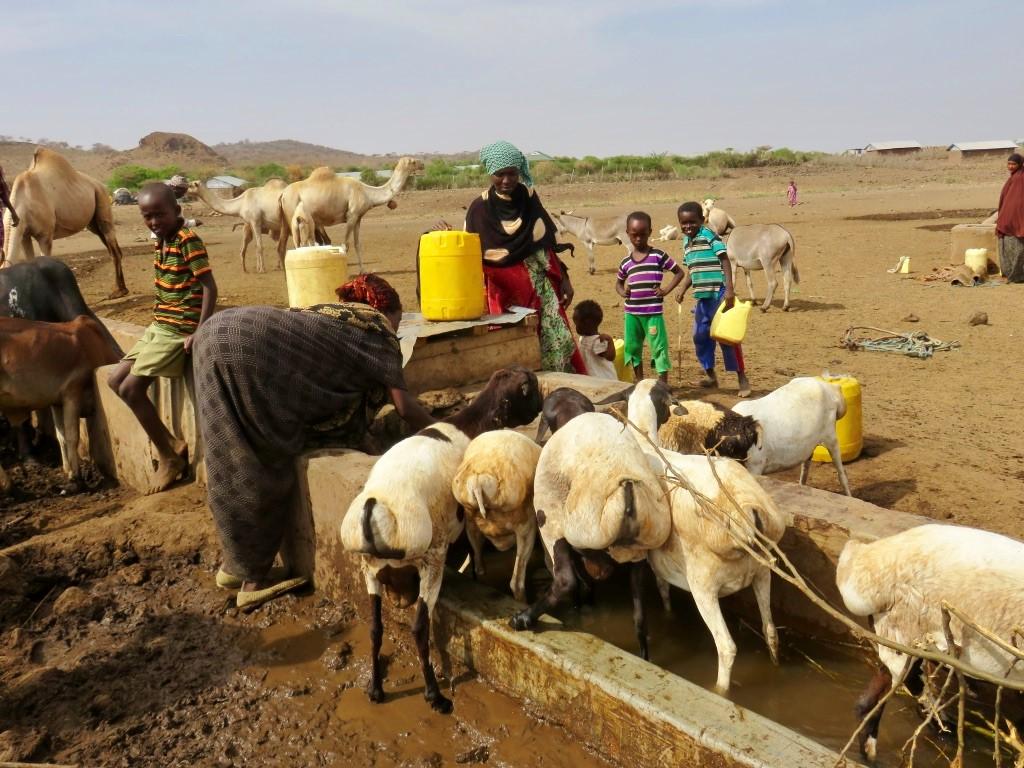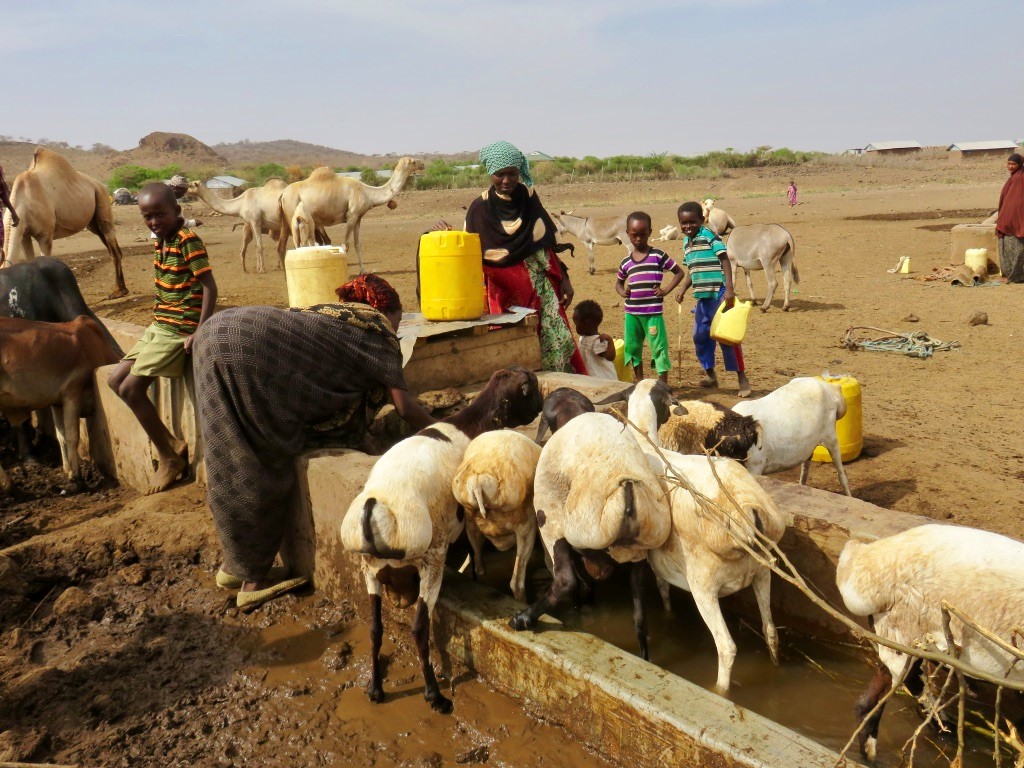Water governance at the subnational and local levels: emerging insights from Ethiopia and Kenya

By Poshendra Satyal

How is water management prioritised across scales, and how is it affecting adaptation in the arid and semi-arid regions of Kenya and Ethiopia? As I discuss here, two key issues of water governance exist.
1. Competition over scarce water resources
In Kenya, there are various actors and institutions that govern water resource allocation for domestic use, animals, crops, and industries. In general, there is a shift towards bottom-up water governance. However, in some cases, the allocation of water is unequal, which impacts on people’s lives, livelihoods and wellbeing. An increase in large-scale developments in the region is also likely to place additional demands on the water and land in the future.
Many conflicts among pastoralist groups and between pastoralists and agro-pastoralists have been reported in our study site in Isiolo, while the local system of rangeland management and the customary practices that control grazing and water access have largely broken down.

In Ethiopia, our case study sites in Awash are characterised by frequent drought and flood hazards, food insecurity problems, invasions by exotic vegetation (Prosopis), decreases in the volume of irrigation water; and significant processes of urbanisation.
There are also ongoing conflicts over the use of natural resources for the needs of pastoralist and agro-pastoralist communities versus for other purposes (e.g. ‘villagisation’). To complicate things further, a variety of actors are involved in determining the allocation and use of water for these different purposes.
2. Water sector reform and emerging contradictions
In both Kenya and Ethiopia, there are a number of interesting issues emerging from the ongoing decentralisation of resources and planning control:
-
The lack of nestedness in policies, practices and decision-making has implications for water governance. While there have been efforts to decentralise and involve a diversity of actors, these attempts have resulted in overlapping or unclear distributions of responsibilities and resources.
-
There is a lack of coordination and integration between different sectors and levels of government and other non-state actors. This problem is exacerbated by a silo approach to water governance.
-
Similarly, capacity and resource deficits at the sub-national and local levels limit support for water and adaptation governance.
-
Finally, the decentralisation process (which is creating a number of new institutional and political spaces, as well as opportunities and challenges) has the potential to enhance or undermine good adaptation governance.
-
While people still perceive livestock ownership as the ultimate symbol of wealth, increasingly entrepreneurship and waged labour are equally prioritised. Women, especially, now engage in a wide range of localised trading activities from camel milk trading, goat marketing, and water and firewood sales, and therefore the most successful people maintain complex relationships with a diverse network of actors.
Based on these early observations, we will be doing follow-up fieldwork that focuses on more detailed analyses of the effects of decentralisation on the governance of adaptation in the key sectors of water and disaster risk reduction.
Photos by Poshendra Satyal